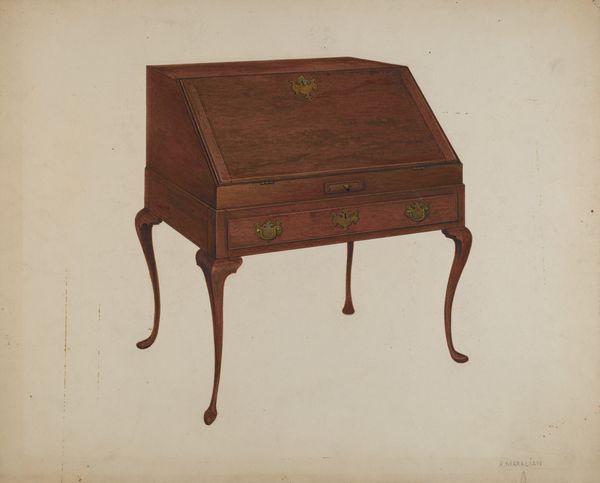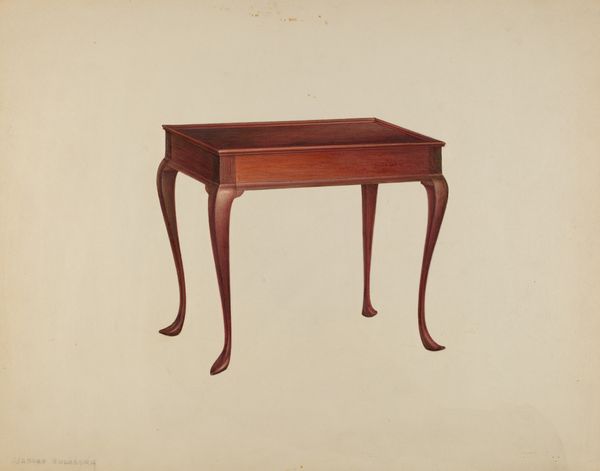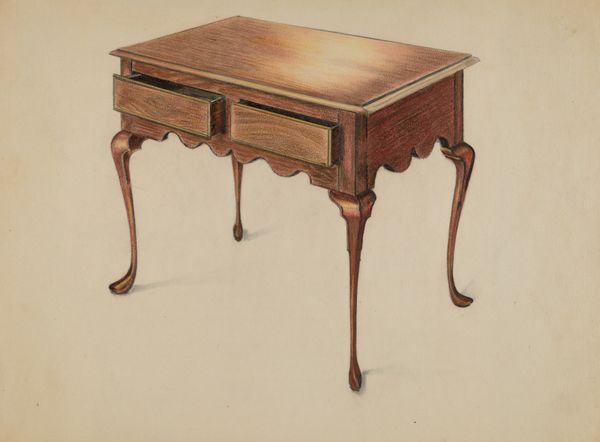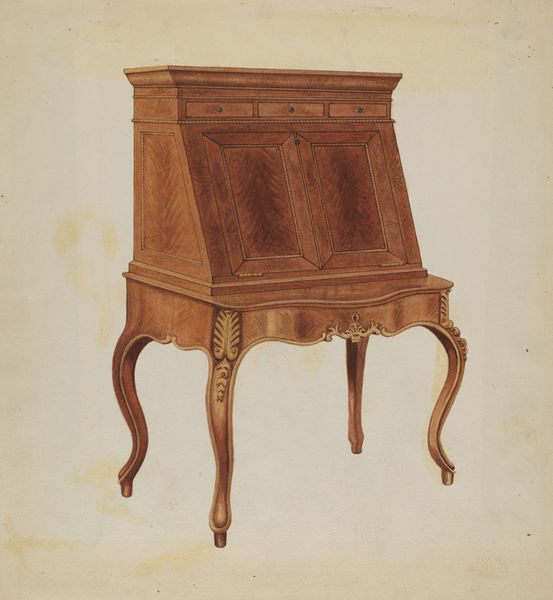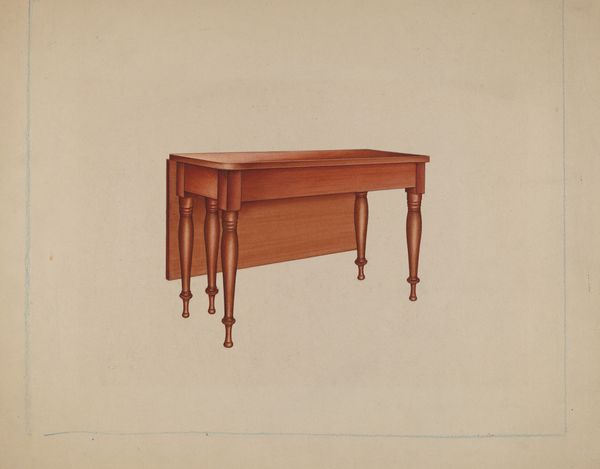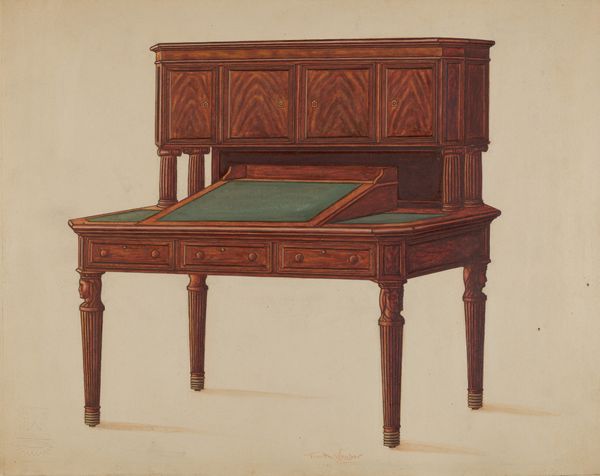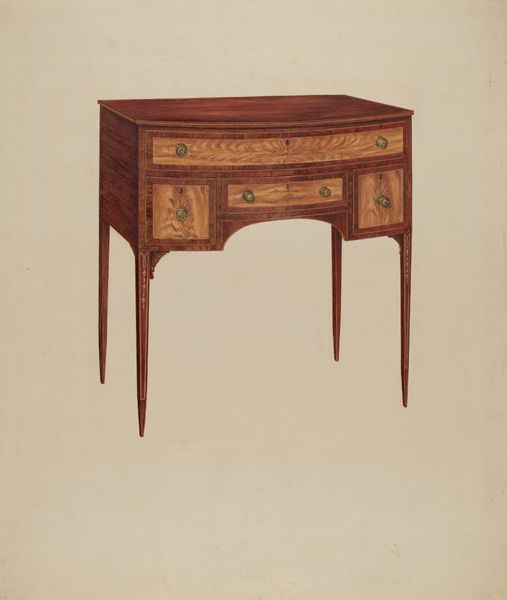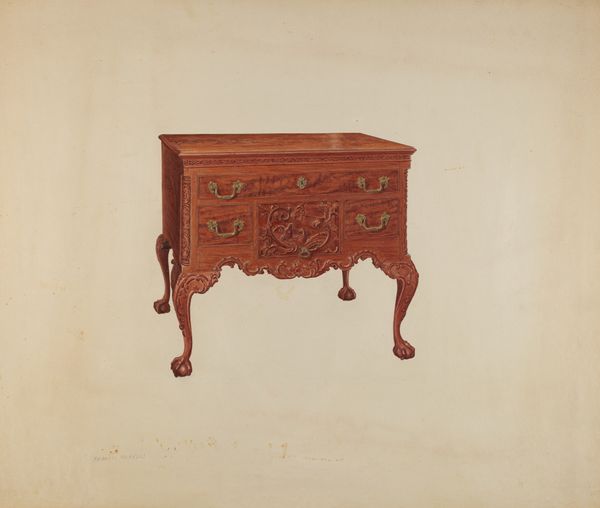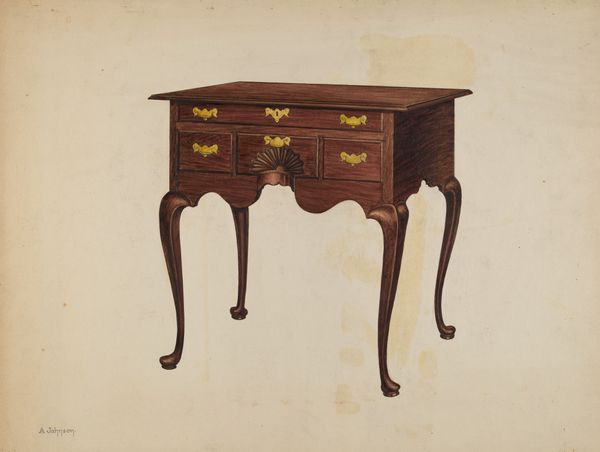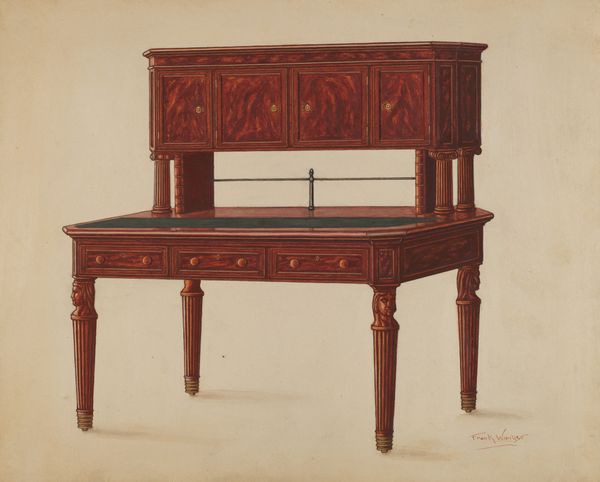
drawing
#
drawing
#
water colours
#
modernism
#
watercolor
Dimensions: overall: 24.3 x 30.5 cm (9 9/16 x 12 in.) Original IAD Object: 54 1/2"high; 58"long; 30"deep; 30"=height of table.
Copyright: National Gallery of Art: CC0 1.0
Curator: Here we have Frank Wenger’s watercolor and graphite drawing, "Desk," from around 1937. The deep reddish brown of the desk dominates the image. What are your initial thoughts? Editor: It exudes a sort of stoic domesticity. There’s something profoundly…still about it. Like a silent monument to the labor performed there. Curator: It’s interesting that you use the word "monument." The desk, as an object, has a long history laden with meaning, from religious devotion to personal contemplation and eventually bureaucratic record-keeping. The closed drawers almost have the weight of secrets held, knowledge contained. Editor: Absolutely, and in the late 30s, there's the historical context to consider. This piece emerges on the heels of the Great Depression. The streamlined Modernism it adopts hints at progress and order but might also speak to a need for efficient administration during a time of crisis. It suggests someone putting pen to paper in very precarious historical and political conditions. Curator: Yes, its very form speaks to the shifting societal values—it’s neither overtly decorative, as one might have seen in previous decades, nor brutally minimalist. The desk presents an accessible modernity. You could imagine this sitting in a family home and representing ideas of both self-reliance and striving for a new era. Editor: The repetition of circular forms–the drawer pulls and rounded legs–adds a softened note to the rectilinear nature of the piece. And notice how even though it is not a massive desk, its height seems intended to impart authority. You'd need to have your chair arranged just right. Curator: Absolutely, you have to be aware of your presence in the space and in the history the object represents. I’m really drawn to the precision of line rendered here and how much presence that formality gives the whole composition. It almost transcends the mundane, don’t you think? Editor: In a way, I do. And thinking about the desk in relation to the human figure it implies, to sit and engage with an object like that… to make use of that history by putting yourself to task with this object and confronting our own relationship to social and economic justice. The color of this work—a warm brown—reminds me that, at the end of the day, that's what we should always be doing: keeping memory present. Curator: What a striking observation to leave us with—one which gives me pause to consider the psychological presence and political impact that simple utilitarian forms might contain. Thank you.
Comments
No comments
Be the first to comment and join the conversation on the ultimate creative platform.
